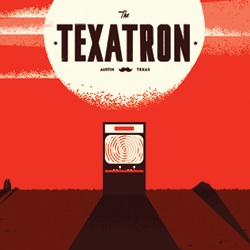RAGDOLL METAPHYSICS: THIEF 4, EIDOS, AND AN UNCERTAIN AMERICAN LEGACY
This week’s announcement that Eidos Montreal was planning to revive the Thief franchise with Thief 4 might have been overshadowed by the reaction to the ridiculous nomenclature of the logo, but there’s something far more significant at stake: the legacy of two of the most important American game design studios, Looking Glass Studios and Ion Storm Inc.
These two studios, both now dismantled by their commercial failure, created games which staked out vital territory for gamers. The experiences these games provided were crucial to the evolution of contemporary gaming. The design work of Looking Glass and Ion Storm often expanded what games were deemed capable of, and made the medium as a whole seem bolder, braver and more interesting.
In terms of pure invention, Thief was probably the most important of these games. Its influence on modern gaming remains enormous, effectively introducing the idea of stealth and non-violent first-person action. It also remains a singular experience: none of its imitators have come close. For many people, there is only Thief.
The original game, subtitled The Dark Project, was a novelty in the gaming landscape. Nothing else had a similar world design, visual theme, or shadowy atmosphere. Originally released in 1998 by Looking Glass Studios, the game caused a stir not simply because its fantasy steampunk world was so thoroughly conceived, but because it took such a radically unfamiliar approach to first-person game design.
Here was a game where most of the action was shrouded in darkness, where you used a bow for its quietness, where running away and avoiding conflict were the most essential activities. It was also a game where use of the environment was at the forefront of your behaviour, rather than simply being a backdrop for carnage. The Dark Project was the antidote to the years of brash action games we’d seen since Wolfenstein. But not only was the Looking Glass approach unusual, it also worked brilliantly.
As with many successful games, the central conceit seemed ludicrous: the idea of being able to hide in shadows to the point of invisibility. Yet, once in play, you could not fault its logic. You rapidly became accustomed to the reactions of the NPCs and the safety of darkness. It was a game that had perfectly balanced its central concept, and allowed everything else to grow out from there. You learned precisely when you’d be seen, and just what level of noise was too much.
And the concept of noise was crucial. Few games expect you to stop and listen. Thief was one of the first games where audio cues weren’t simply evocative: they were essential to how you played. Listening to the “barks” of NPCs allowed you respond precisely to their behaviour, without even having them in line of sight.
This system of “readable” audio cues was largely constructed by sound designer Eric Brosius, who put a substantial amount of work into perfecting previously overlooked features of a soundscape, such as footsteps.
The sound these made enabled the player to judge whether they were stealthy or noisy. The clanking of metallic surfaces and the creak of floorboards were boosted up far beyond a realistic levels to give the player the information he needed to realise that his activities were no longer going to go un-detected by his enemies. Likewise the sounds made by guards had to be to entirely unambiguous: it was essential that a Thief player know if suspicions had been aroused, or if he had been spotted.
The attention paid to sound design in Thief was similar to the attention played to GUI design in most other games. Average or even poor game audio is seldom mentioned by critics, but everyone noticed Thief‘s audio design, because it was integral to the success of the experience. It’s not even a lesson that many game designers are aware of. And if a gamer has not played Thief, then I think it fair to say they’re not going to have appropriated a fairly important part of what games are capable of.
Also crucial was the sense of vulnerability that the Thief games imbued us with. It was remarkable to watch gamers familiar with the run-and-gun classics to encounter Thief for the first time. Their dismay as violence towards guards was met with a rapid death. They soon learned to back off: to be afraid. Retreat, hiding, waiting: these were the best weapons in this game of fantastic burglary.
Ion Storm brought this sense of horror to its zenith with their sequel to the series, Deadly Shadows, a brilliant, wholesale overhaul of the Thief games. It was also, sadly, Ion Storm’s last major title. It contains one of the most entertaining horror levels of all time, The Cradle, which dominates the end of the game (at least until you discovered the I-Win-Button bug).
Designed by the man now heading up the 2K Marin BioShock 2 team, Jordan Thomas, this supernatural orphanage-cum-asylum stands out as a high point among the many brilliant Thief levels. I watched this played out on a project screen when the game was first released, and it terrified an entire room full of people – not just the person playing. It’s easy to argue that the Thief 2 levels were the most intricate and interesting of Thief‘s robbery architectures, but none of them were quite this thrilling or threatening.
Couple this to the open city of Deadly Shadows, which expanded the level-by-level structure of the Thief games, to allow the player to explore more of the world between levels and to get something of a taste of the wider world in which Garrett operated, and you get a sense of where Thief 4 will probably head: into a fantasy world that is even more intricately urban, a sandbox looting game with wide-open rooftops and labyrinthine alleyways. Of course, I can only speculate. But with a game as fondly remembered as this one speculations rapidly haze into dreams. This is the kind of trouble that awaits the reality of the fourth Thief game.
Eidos Montreal, who are currently developing both Deus Ex 3 and Thief 4, are in an extraordinary position. Only long-established studios such as Valve or Epic generally carry the same weight of expectation. But they’re also in a unique position to reaffirm the work done by Looking Glass and Ion Storm, and demonstrate just how important intelligent game design is to both gamers, and our industry. The legacy of these studios is a complex, controversial one. But I think it’s also a beacon of hope, no matter how faint.
Thief 4 has no set release date, so there’s a long time left to wait. Don’t mess it up, Eidos Montreal, we’re counting on you.
[Jim Rossignol is an editor at RockPaperShotgun.com and the author of This Gaming Life, an account of the life of modern videogames and some of the people who play them. Ragdoll Metaphysics is his Offworld column exploring and analyzing gaming’s vast world of esoterica.]
- Ragdoll Metaphysics: JG Ballard, Boredom, And The Violent Promise …
- Ragdoll Metaphysics: Introversion on Mathematical Cities, Gaming …
- Ragdoll Metaphysics: Cloud Gaming Is The Nebulous Shape Of …
- Ragdoll Metaphysics: Good Grief, The Victory Of Eve's Space Goons …
- Offworld: Ragdoll Metaphysics Archives
See more posts about: Offworld Originals, Ragdoll Metaphysics






